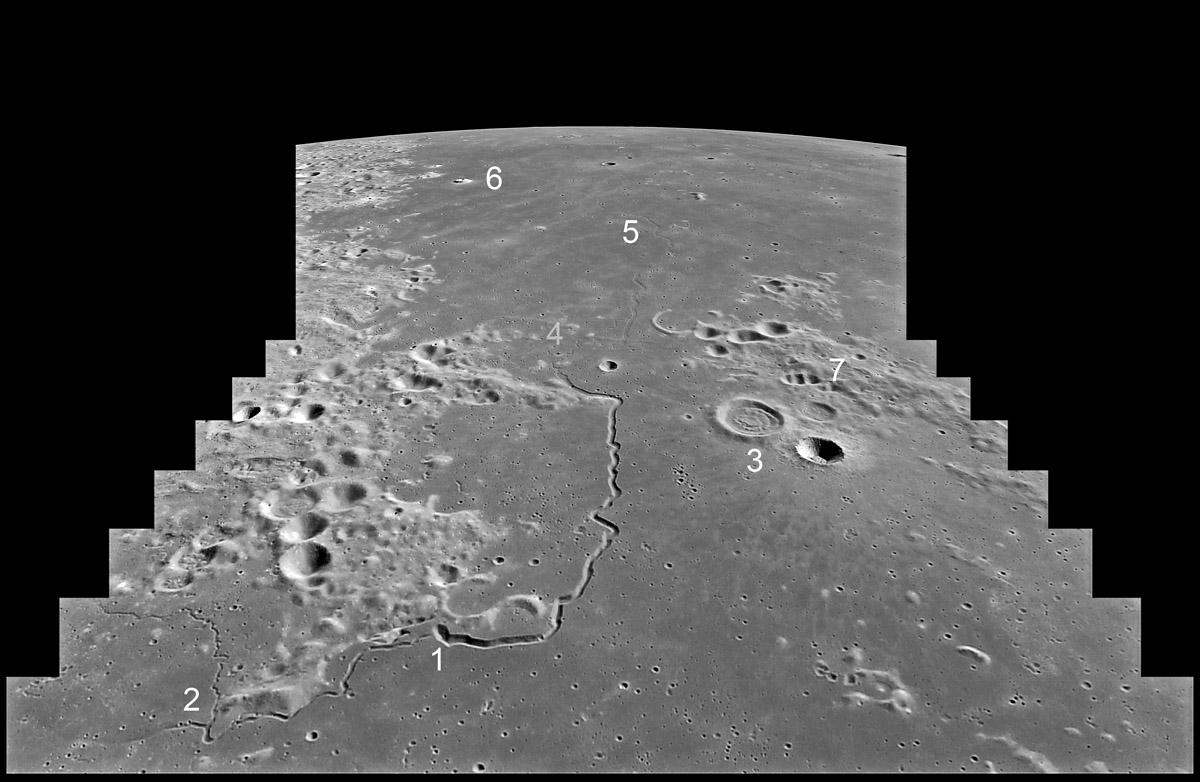May 30, 2022
A Sharper Tale
Originally published July 7, 2012

Kaguya HDTV image from Shirao & Wood (2011)
The overwhelming success of the Lunar Reconnaissance Orbiter dulled my memory of an earlier spacecraft that provided unique oblique views of the lunar surface. Looking through a collection of those images I selected this one as a reminder of their beauty and scientific interest. This view looks south along the northeastern shore of northernmost Oceanus Procellarum. At #1 is the headwaters (headlavas?) of the Sharp Rille, which starts in a V-shaped vent that is still about twice as deep as the lava channel that flows out of it, around the bend and then southwards. An earlier lava channel/sinuous rille is beheaded by the vent, but flowed eastward, skirting hills until at #2 something remarkable happened - it bifurcated with part going up (in this view) and the other channel turning left, but quickly dying out. Using the LRO altimetry tool I discovered that the floor of the upward rille is higher than the junction point. This could mean that the uprille was an older channel that was abandoned as the rille turned left, so perhaps it never flowed both directions at the same time. But because the up rille looks fresher than then left one this interpretation may need more work. At #3 is a very fresh impact crater, 7 km wide Louville D, and next too it a view. The rille passes the Marian T steep-sided volcanic cone (#6). There are other interesting features here, but one final non-volcanic landform. At #7 are three closely-spaced craters with straight segments between them - this was probably a near-simultaneous triple impact - either secondary craters or a broken asteroid. Tomorrow we'll get another perspective of this area.
Chuck Wood
Technical Details
I wanted to make an audio tour for this LPOD but couldn't make it work; maybe tomorrow.
Related Links
Rükl plate 9
The Times Atlas of the Moon (1969), map-page 6; the lower one of the two maps on that page.-  DannyCaes Jul 7, 2012
DannyCaes Jul 7, 2012
Yesterday's LPOD: Classic Sameness
Tomorrow's LPOD: Sharper Still
COMMENTS?
Register, Log in, and join in the comments.



